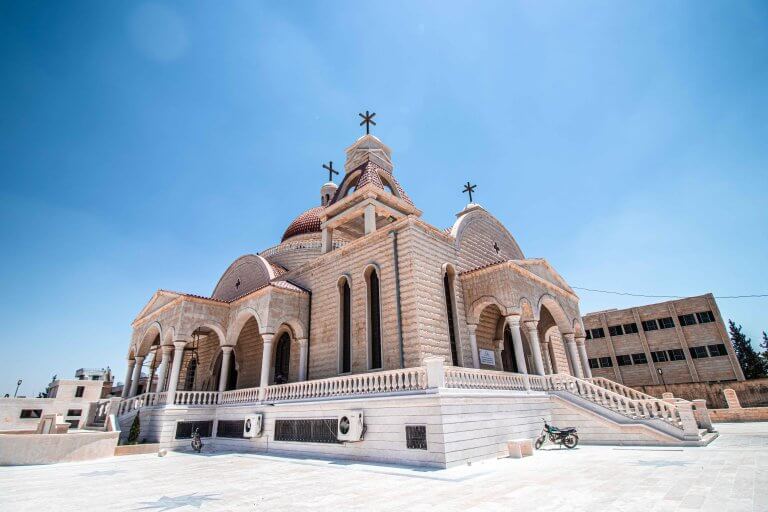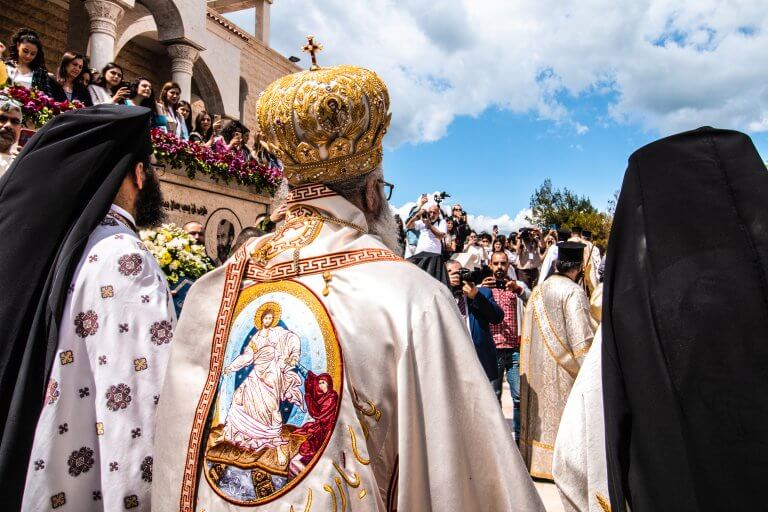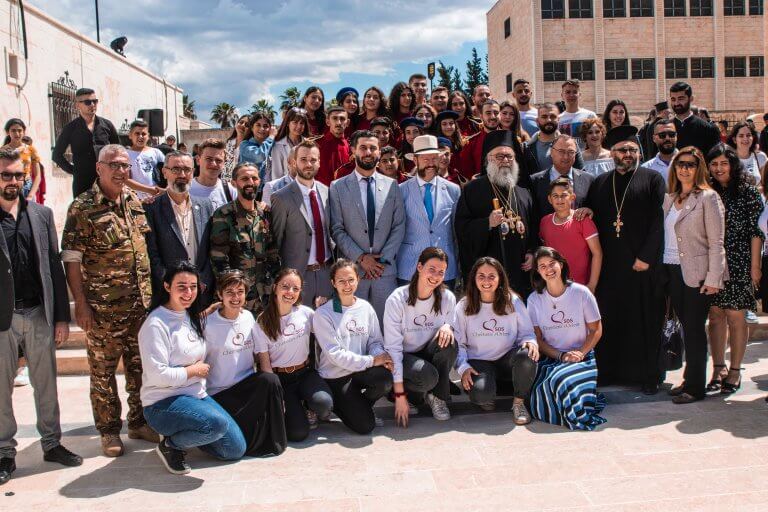On Friday 6 May 2022, the team of SOS Chrétiens d’Orient in Syria, accompanied by Benjamin Blanchard, director general of the association, is in Squelbieh, a small town of 14,000 inhabitants located in the Gharb plain, near Hama, to participate in the consecration of the new church of Saints Peter and Paul.
This historically Christian city still has many faithful people who are attached to their land and want to stay there. The war has nevertheless taken its toll. For five years, particularly in 2012-2013, the village, one quarter of which was completely destroyed, was bombed by thousands of jihadist shells, without ever being captured. The Christians organised themselves into a self-defence militia and succeeded in repelling the terrorists’ onslaughts that tried to surround them, eventually making a breakthrough and pushing the enemy away from the town. There is not a family in the town that is not bereaved by these tragic events.
The construction of Saints Peter and Paul Church began in the 1980s. It was intended to accommodate the ever-growing Greek Orthodox community, which until then had only one church that was too small. Construction quickly slowed down due to lack of funds, then stopped by the war, but was resumed when the region was liberated and thanks to a new round of donations.
SOS Chrétiens d’Orient, which has been active in the region since 2016, organised a charity dinner in France in 2019 in the presence of Monsignor Nicolas Baalbacki, Metropolitan Archbishop of Hama. Thanks to the generosity of donors, the association has participated in this final stretch in the construction of the church by financing, for a total of €50,000, the paving of the courtyard around the church, as well as the outdoor theatre adjoining it, but also the sound system of the church and, a major project, the iconostasis.

The iconostasis, from the ancient Greek “eikonostasion” meaning “erected images”, is a central element of the Orthodox liturgy which delimits the nave and the altar and symbolises for the faithful a window to the world above. It is a high wooden partition, originally intended to highlight the choir curtain, a distant descendant of the curtain that closed the Temple of Jerusalem, decorated with numerous icons, including in the centre that of Christ Pantocrator (in majesty) and Mary Theotokos (mother of God). More than a major artistic work characteristic of Byzantine art, the iconostasis is in fact the heart of a Byzantine church, since it turns the eyes, hearts and souls of Christians towards God through the holy icons. It took the craftsmen thousands of hours of carpentry, drawing and then writing the icons to create this masterpiece.
On the feast day of St. George, and after almost forty years of work, it is with great joy that the inhabitants of Squelbieh welcome His Beatitude John X, Greek Orthodox Patriarch of Antioch and the entire East, who has come to consecrate the new church of Saints Peter and Paul. Everyone is dressed in his or her best clothes, the young people of the village form a hedge of honour decorated with white, yellow and blue flags. Little children dressed in all white, like angels, stand in front of the church porch while the scouts, gathered in a procession, celebrate to the sound of drums and trumpets the arrival of the pastor who advances under the rose petals that the village children throw from the roofs.

The ceremony begins, unforgettable. It lasts four hours, during which all the stages of the consecration of a church are revealed, followed by the celebration of the first mass on the newly consecrated altar. First, the procession goes around the building and stops in front of the great door which, after a blessing pronounced by the patriarch, is opened with shouts of joy. The ceremony, grandiose, follows its course in a church packed to the brim.
The highlight is the consecration of the altar and the insertion of the holy relics. The patriarch and all the bishops and priests anoint the altar with holy oil, consecrate it, incense it, insert the holy relics and then cover it with liturgical cloths and sacred icons and pronounce the words of blessing. Then, at the end of a monumental pole, cotton wool bathed in holy oil is used to anoint the walls and columns of the church with the sign of the cross.
When the divine liturgy following the consecration is over, all gather to greet the patriarch. For the Christians of Squelbieh and the surrounding villages, this is an immense event: it is as if we were welcoming the Pope in person to one of our villages in France. More than that, it is a sign of rebirth, a sign of peace, a sign of hope for the Christians of Syria. It is proof that once again, peace has replaced war, love has conquered death, the Cross has conquered hell and Christ has truly risen. The volunteers left, witnesses of this hope that they could read on all the faces and keeping in their hearts this cry of joy that, all day long, resounded in the walls of the new church: “He is truly Risen”, “Hakan Qan”!
